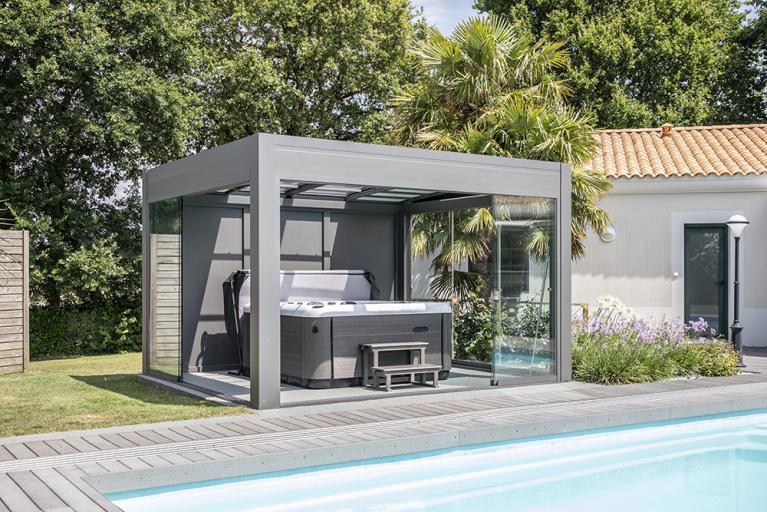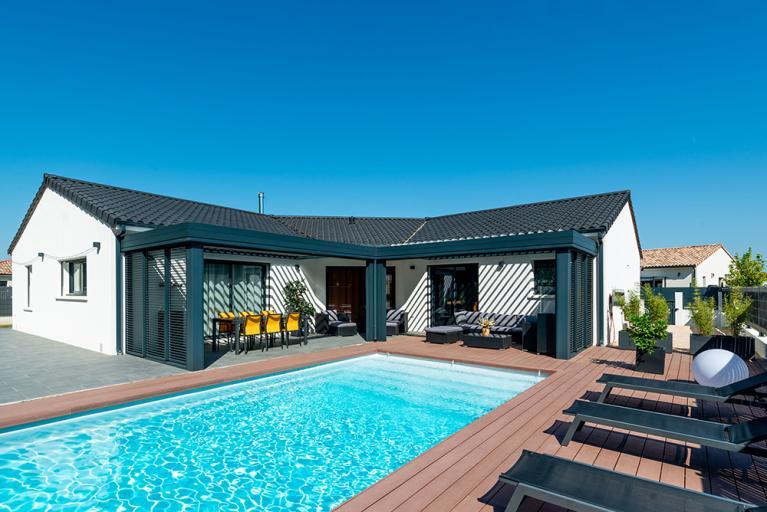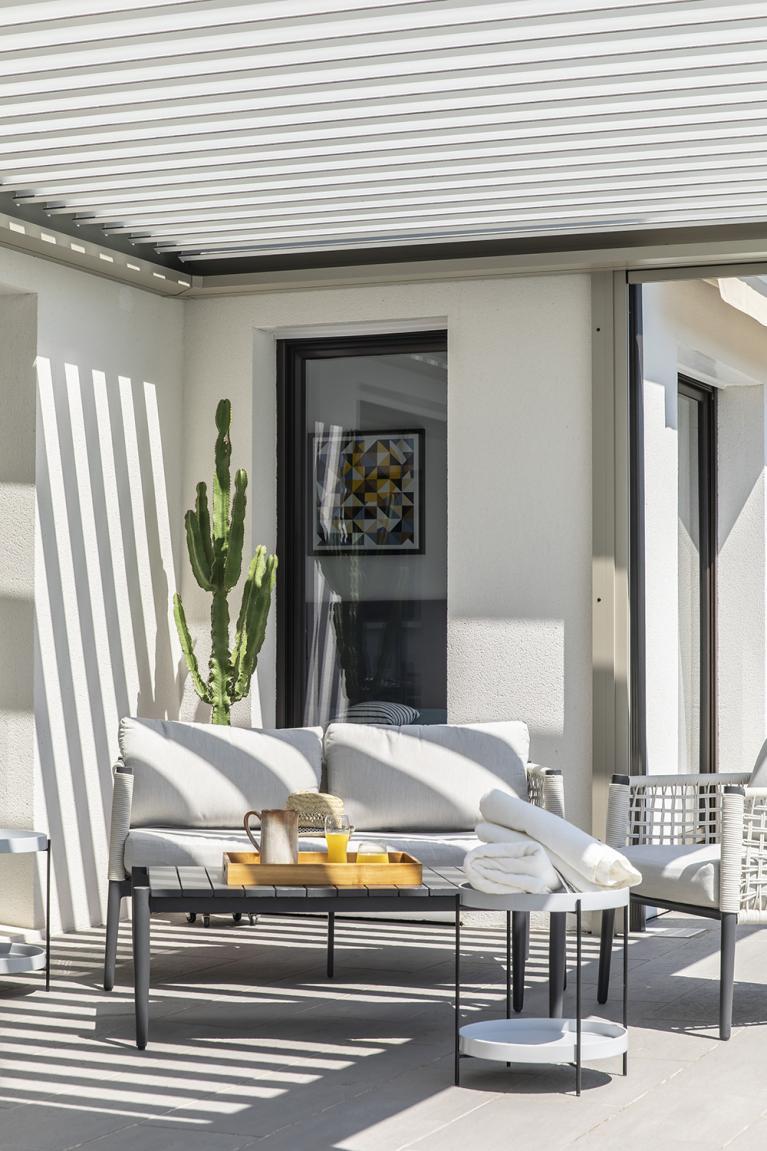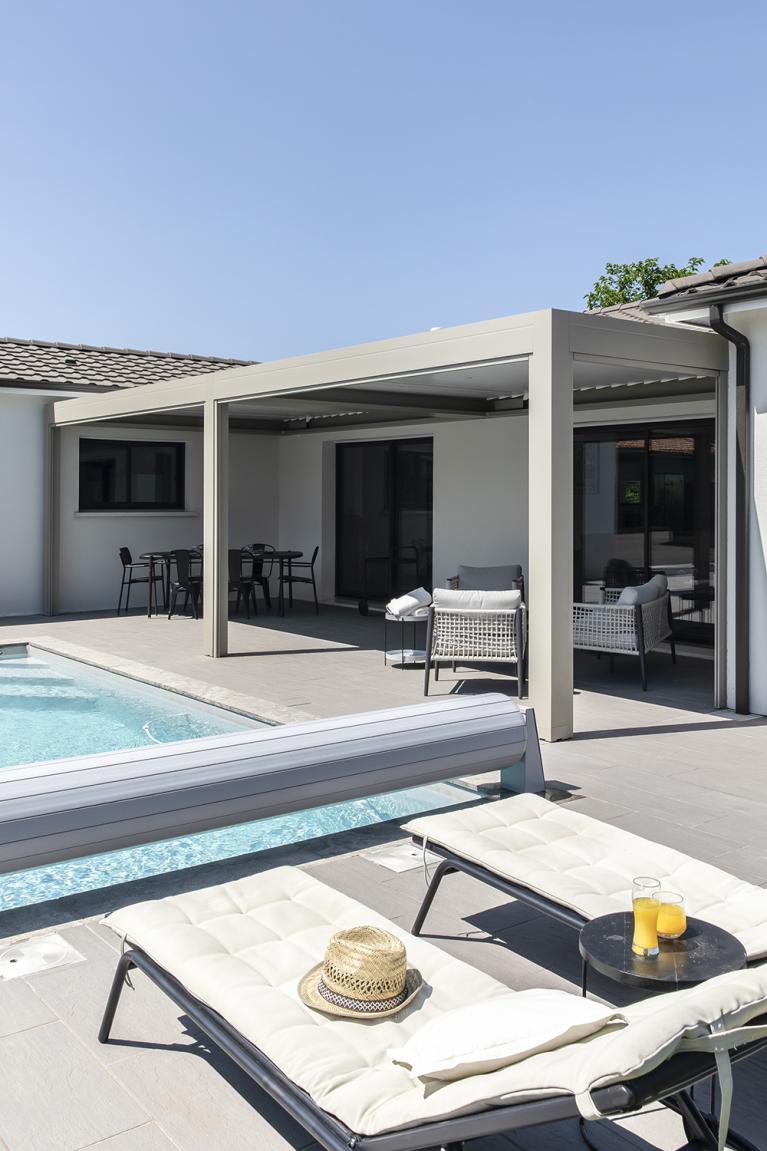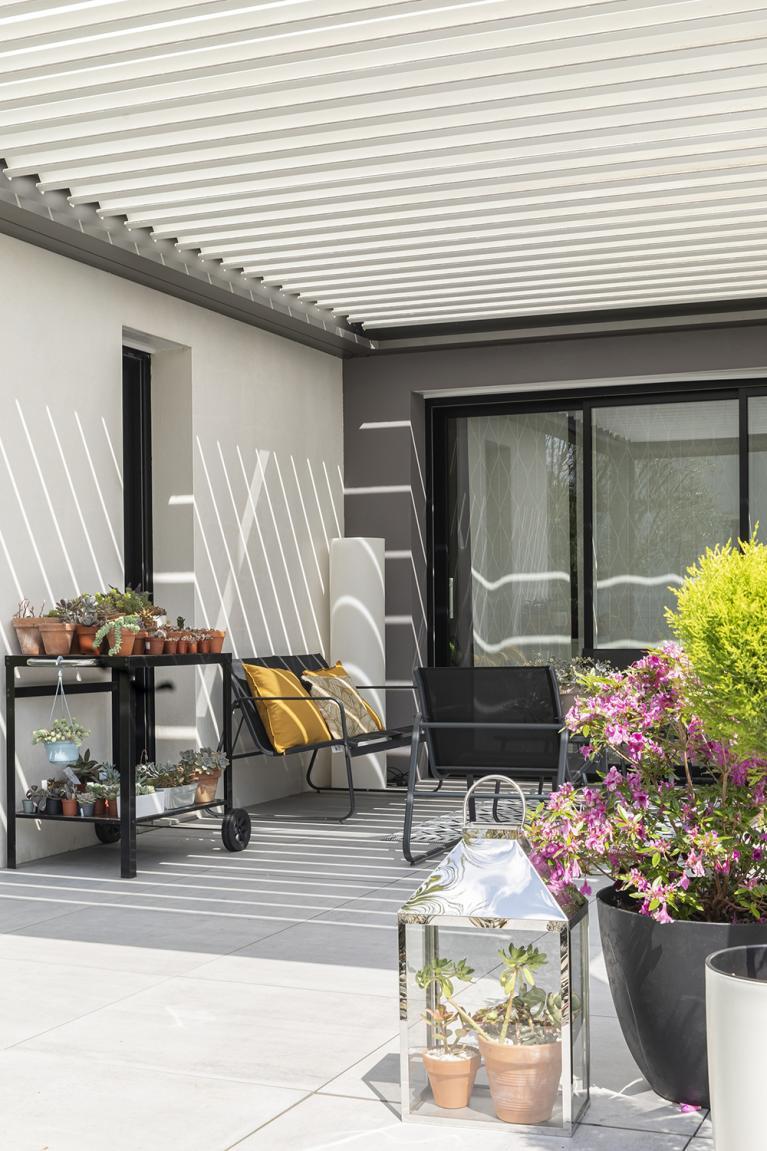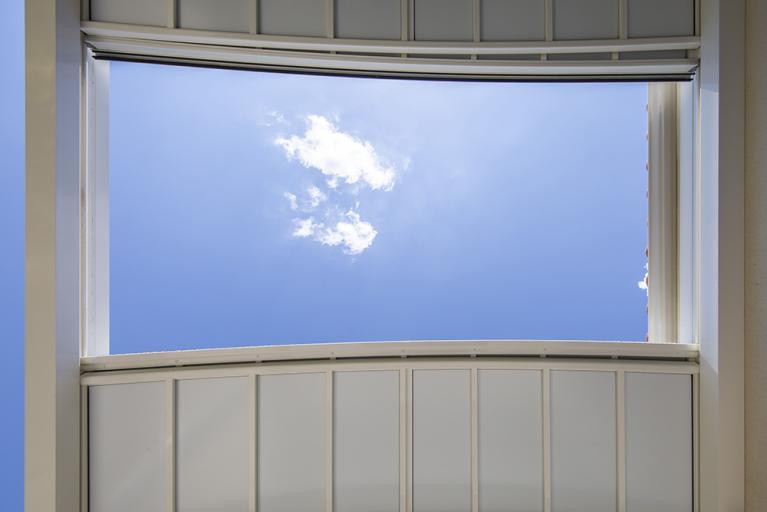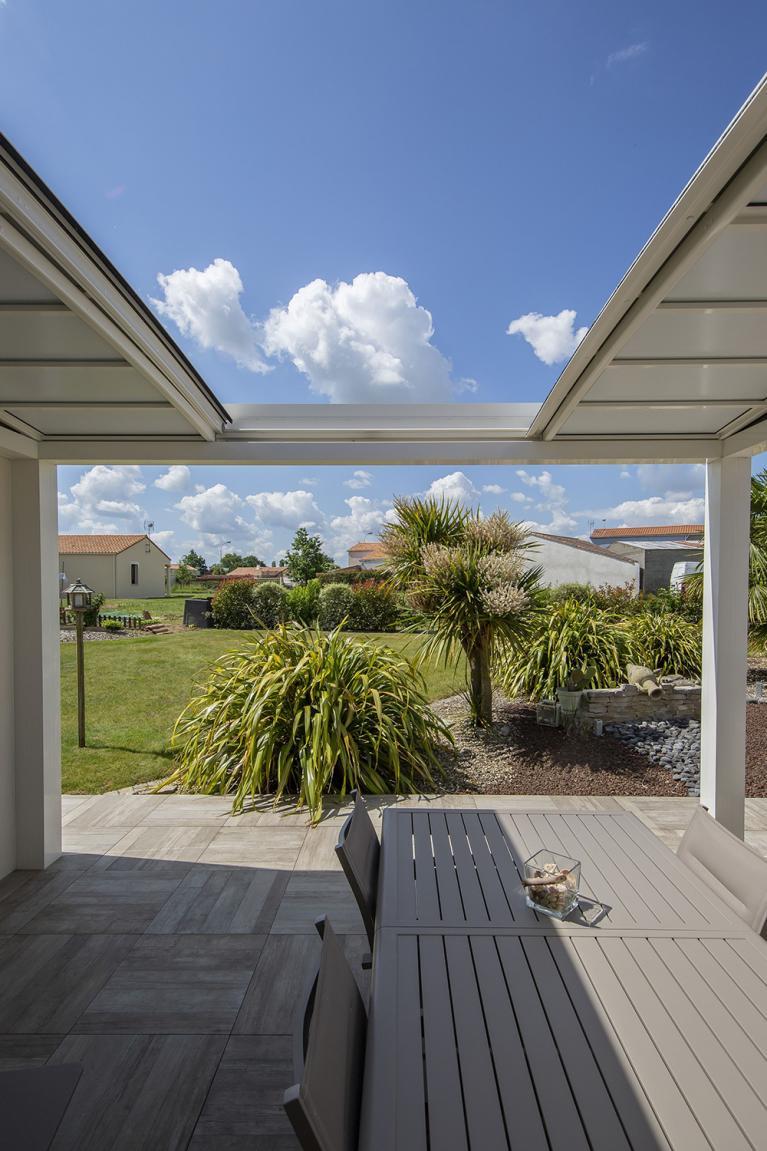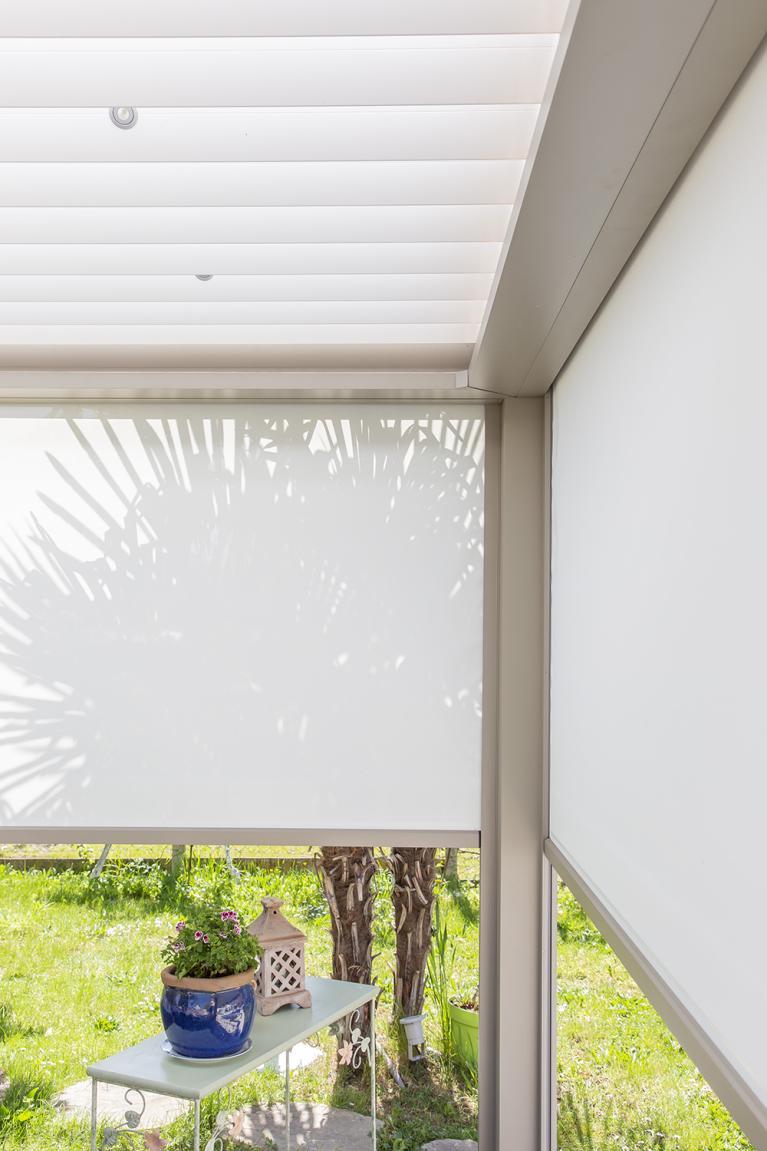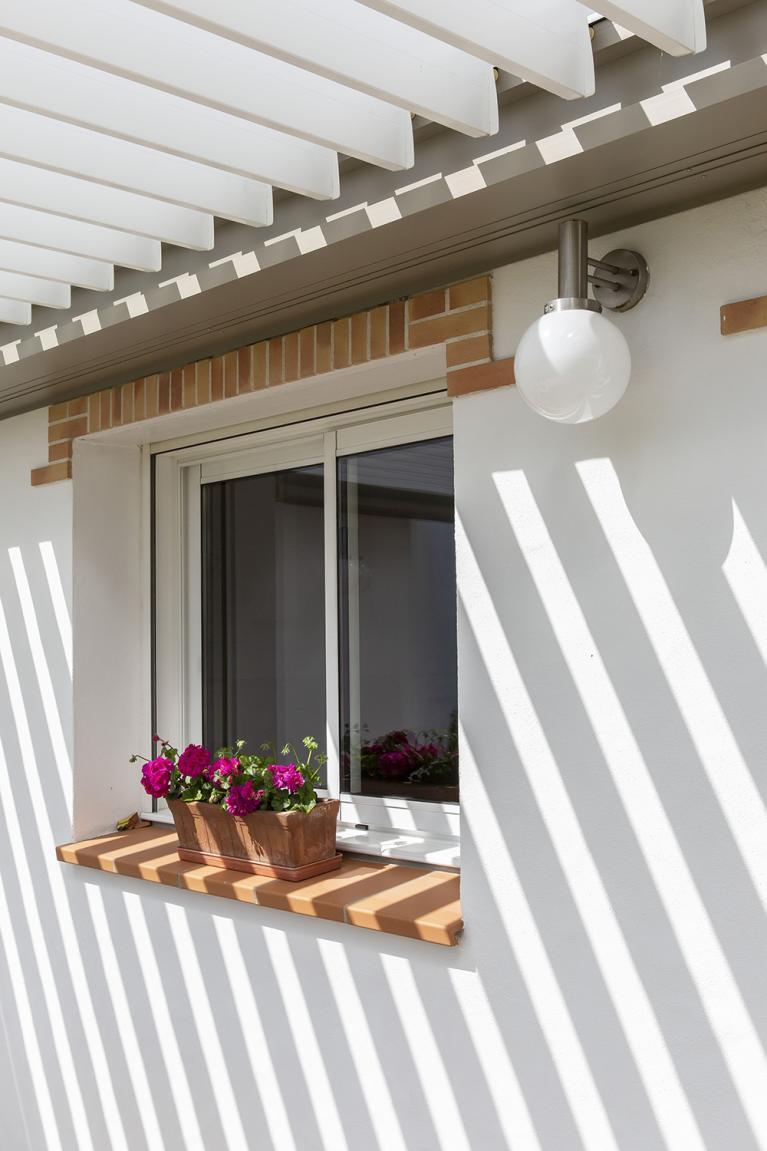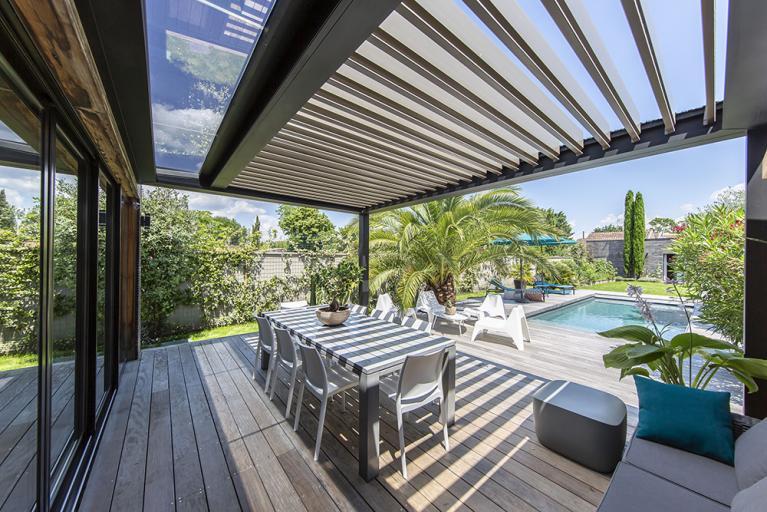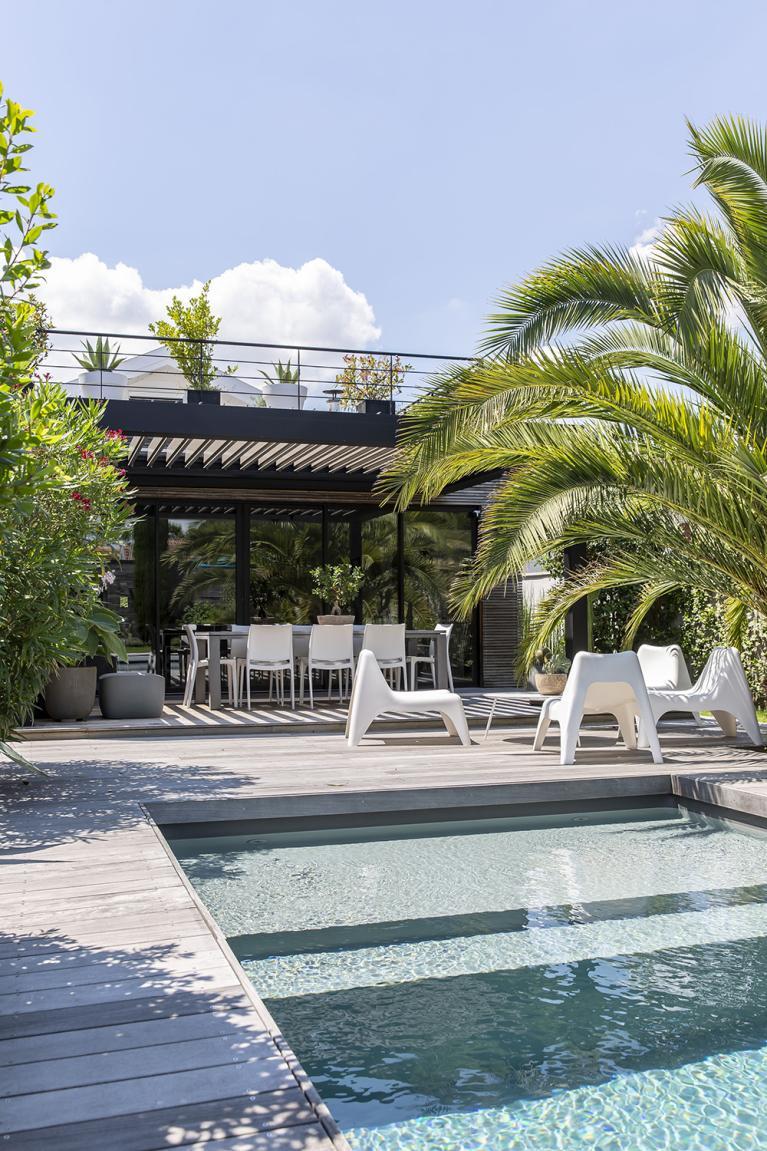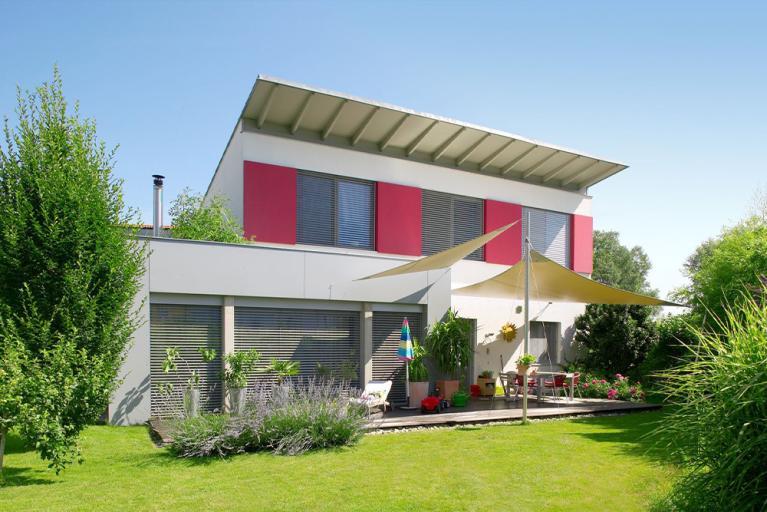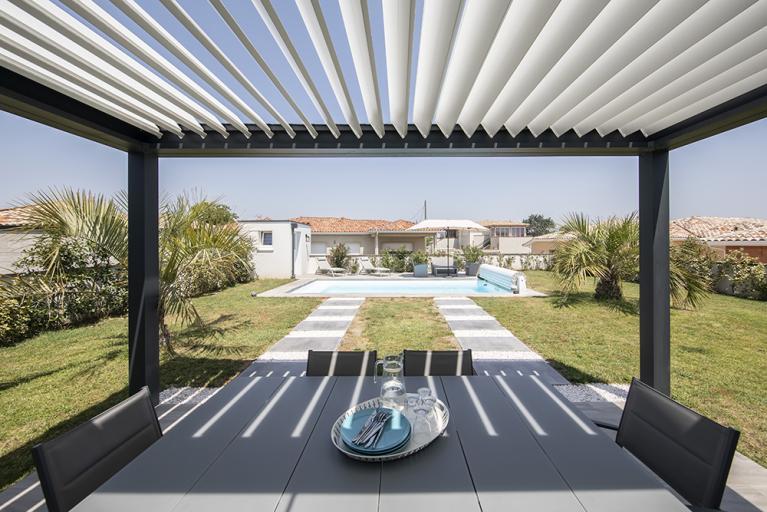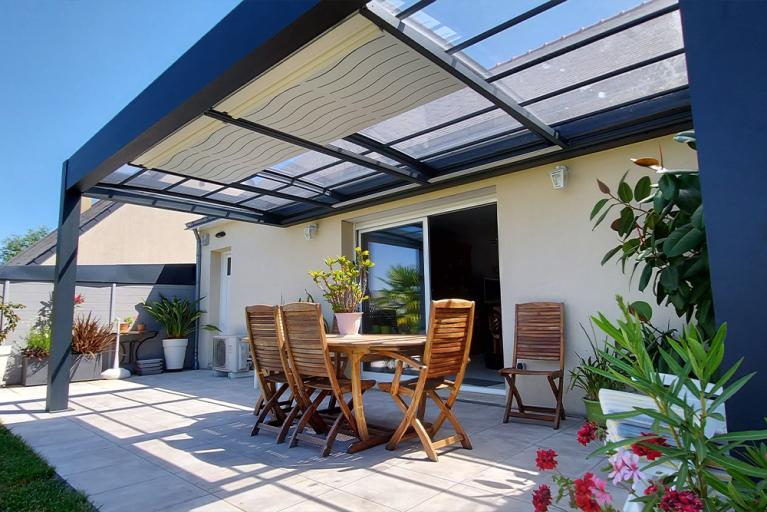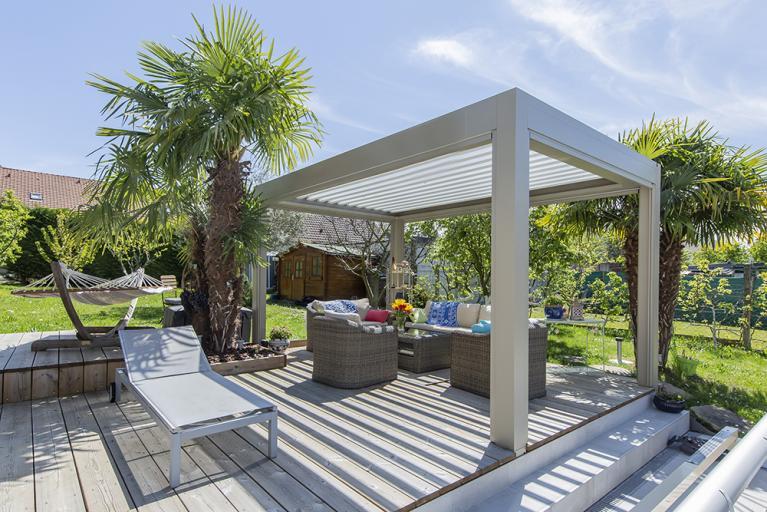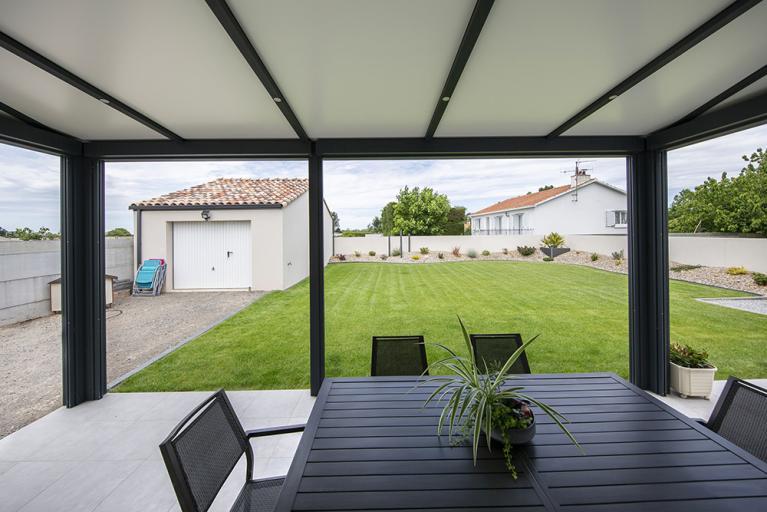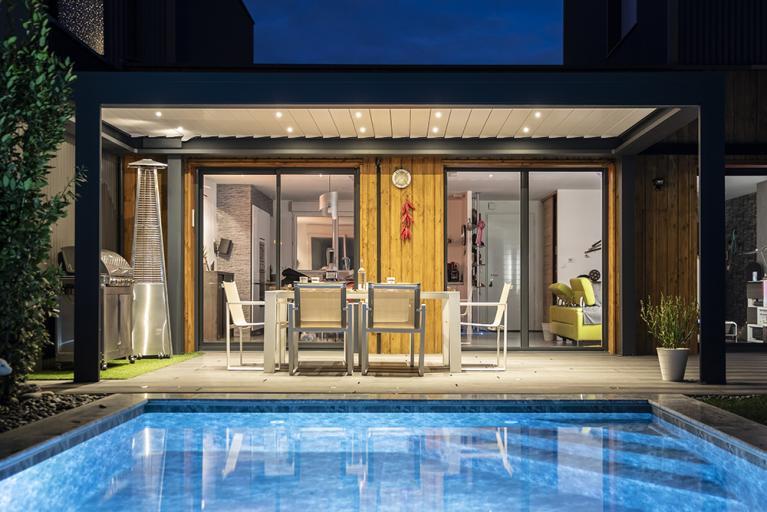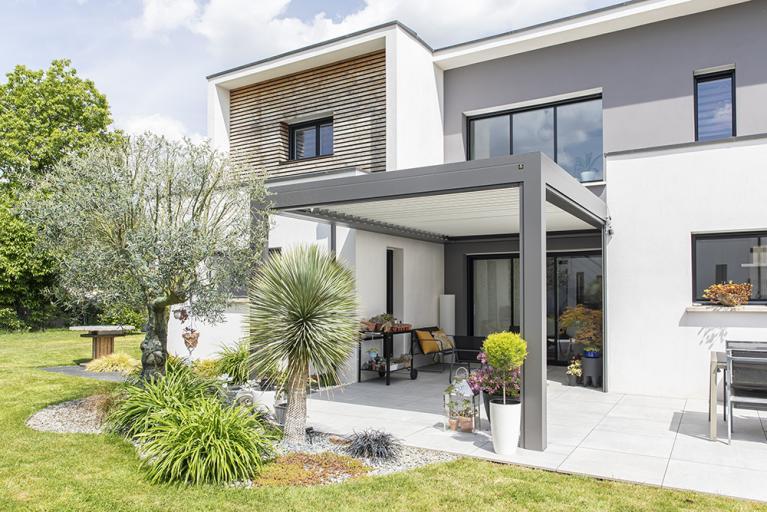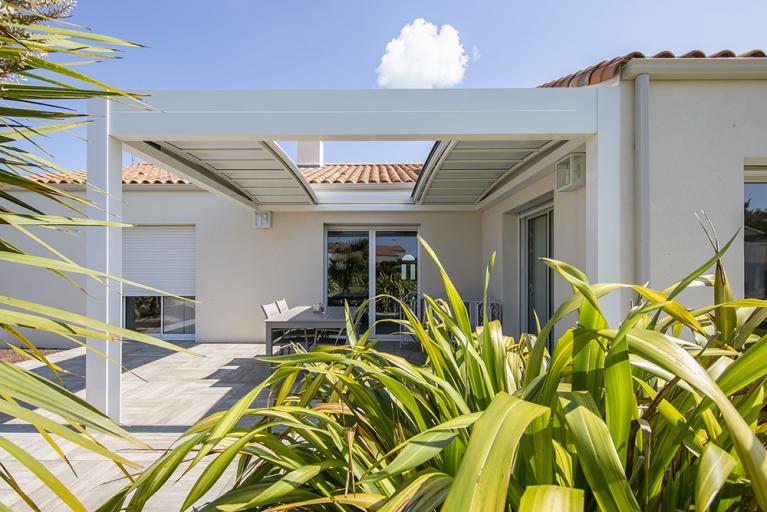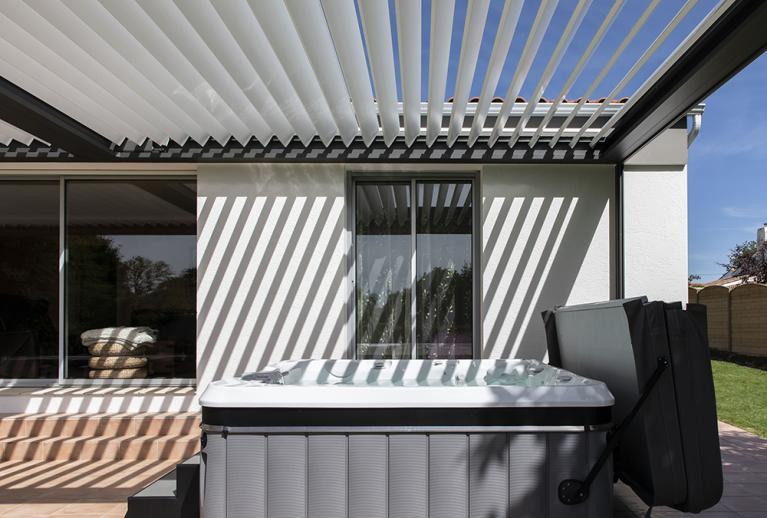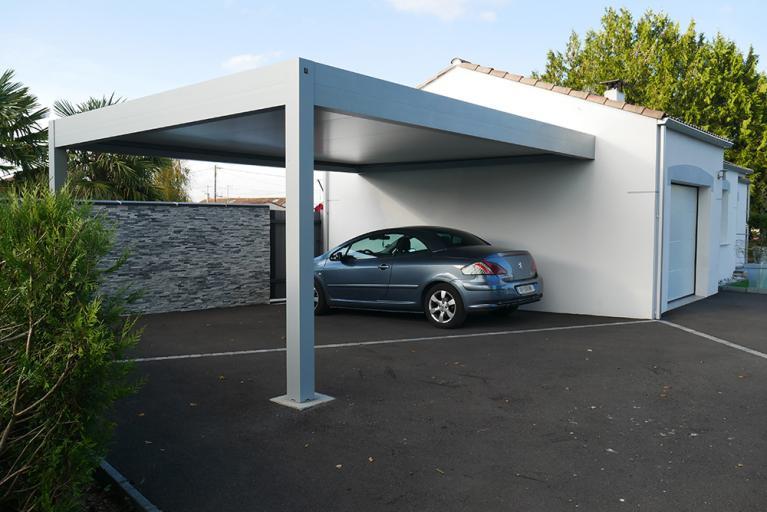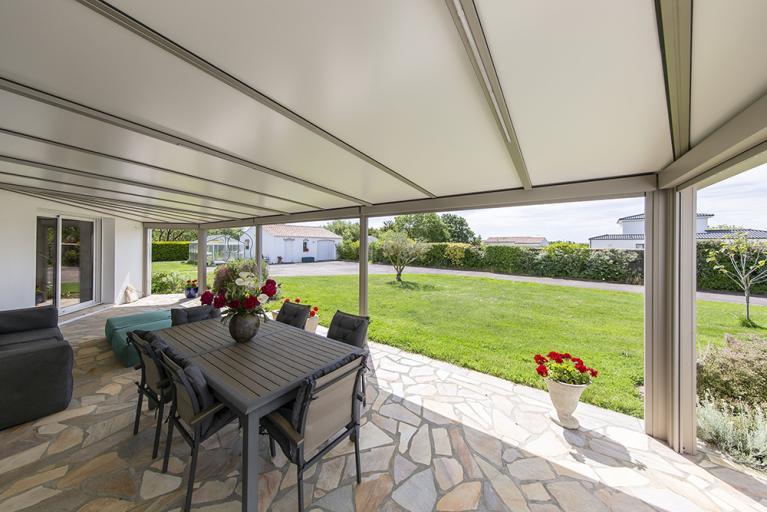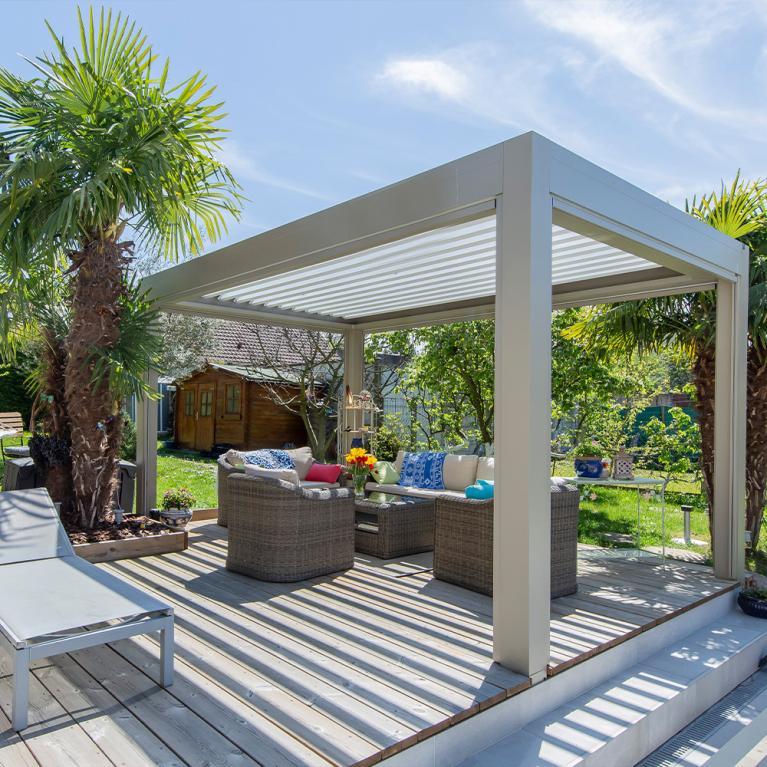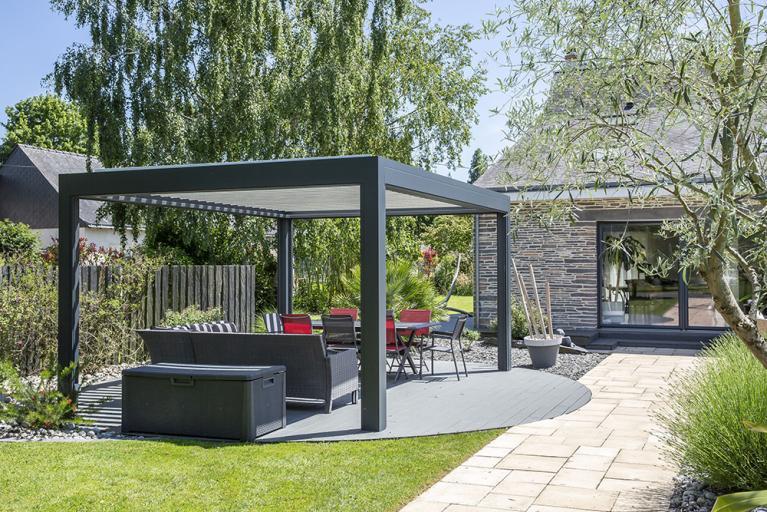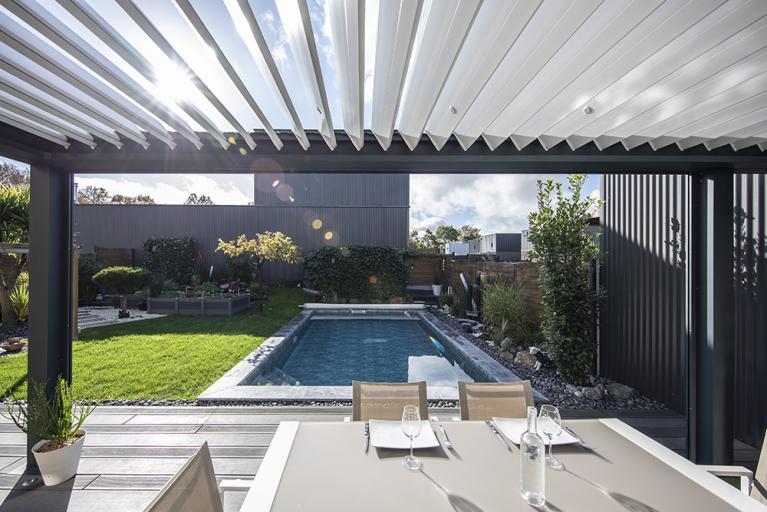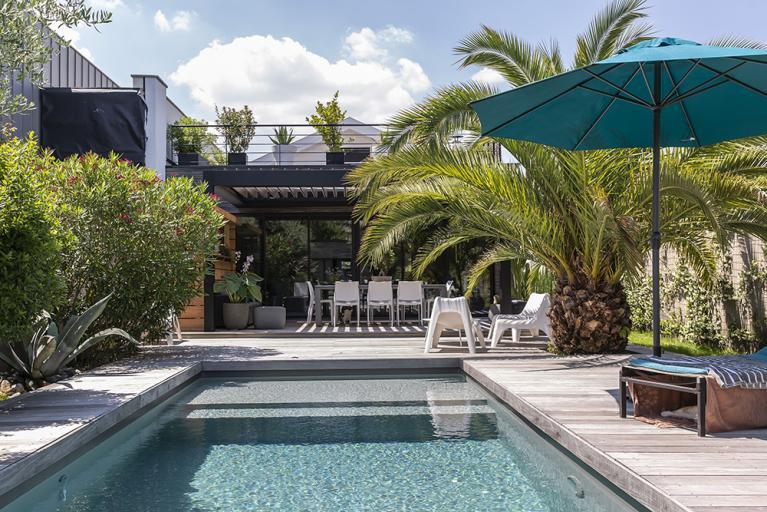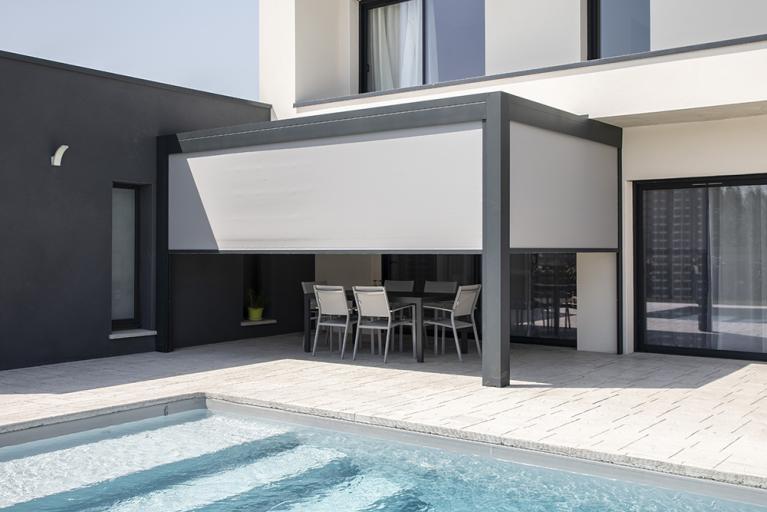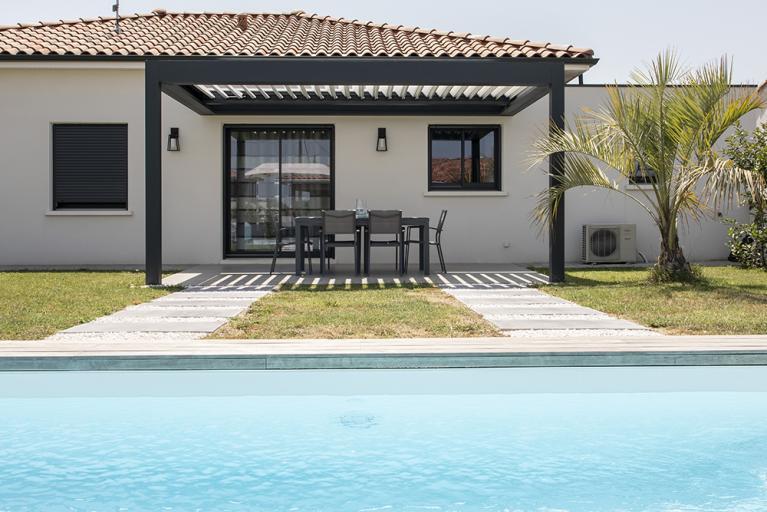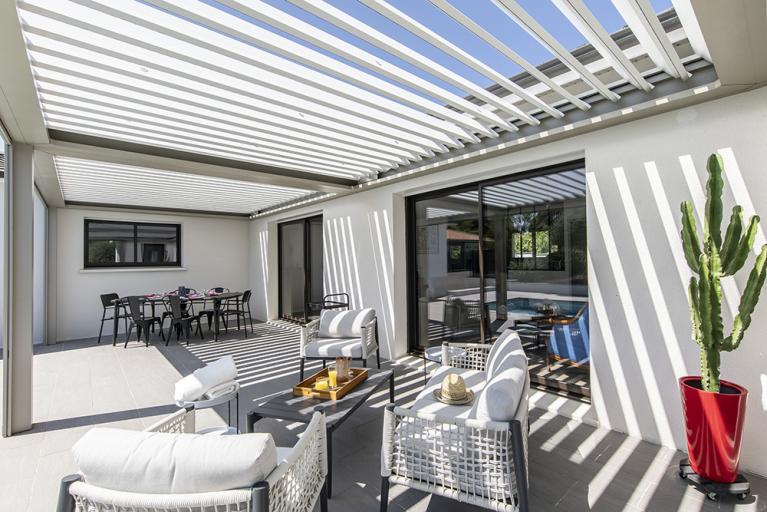Pergola on terrace
Where can I put a pergola in my garden?
So you've decided! You're going to call in a builder to install a custom-made pergola in your garden! You have in mind its shape and colour, and you've even imagined its layout. However, you're not sure where to put your pergola. Which direction should you face it? Where is the ideal spot to enjoy it to the full? We'll help you make your choice!
Can I put a pergola on my terrace?
The good news is that it is entirely possible to install a pergola on your terrace. It is permitted by law, especially as this construction allows you to enhance your exterior in a rather pleasant way.
On the practical side, by scrupulously following the manufacturer's instructions regarding its orientation, size and shape, you are guaranteed to obtain a durable and comfortable structure for sunny days. So make the most of your new haven of peace for moments of absolute relaxation!
The location of the pergola terrace according to the model
The first question you should ask yourself is: Do I want a lean-to or free-standing pergola?
One is wall-mounted and firmly fixed to the front of your house. The other is independent and can be placed anywhere. Each has its advantages and disadvantages, some of which are listed below.
The advantages of the lean-to pergola
Placed against your house, the lean-to pergola is a transition to the outside. It allows you to access your garden without being exposed to the elements. In winter, your house stays warm thanks to this shelter. And in summer, the shade provided by the roof often means you don't need to use the air conditioner.
The disadvantages of the lean-to pergola
Since the wall-mounted pergola is attached to the house, by providing shade it also darkens the interior of your home. In addition, it is essential to drill holes in the wall to attach the pergola.
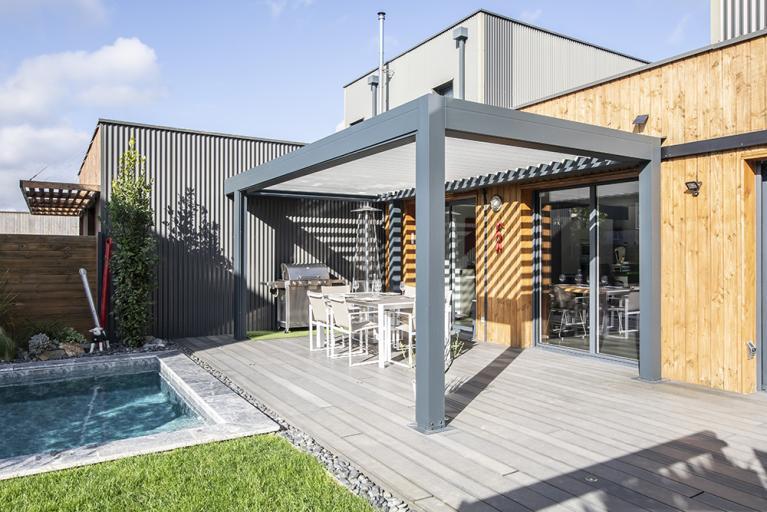
The advantages of the free-standing pergola
As its name suggests, the free-standing pergola is independent. You can install it wherever you want in your garden. It can be used as a transition room and also as a place to relax, out of sight.
The disadvantages of the free-standing pergola
If you want to make your pergola completely independent, and take advantage of light or any other comfort requiring electrical installation, you will have to make the necessary arrangements to supply your garden with electricity. Another inconvenience is having to cross your open ground to get to your pergola, which is not very pleasant when it rains!
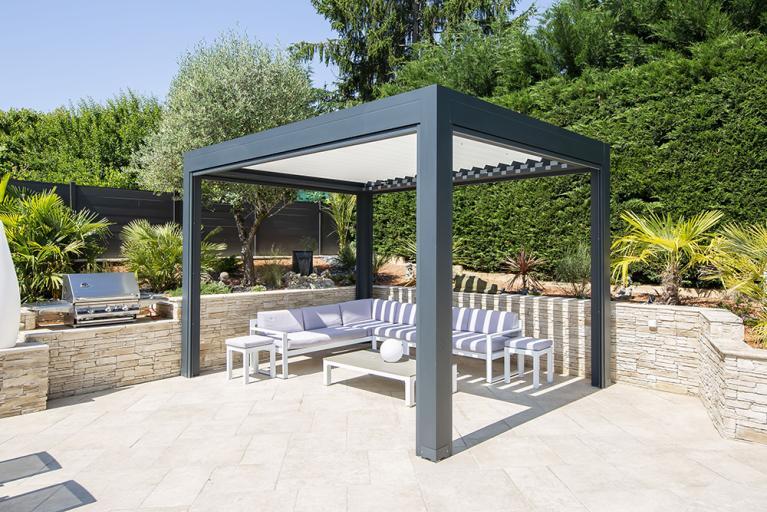
Choosing the right orientation for your pergola
Your needs, the region in which you live and the space available to you are important parameters to take into account.
However, as the pergola is a covered space, its orientation plays an essential role. When we follow the path of the sun, it is relevant to install your shelter to the south or west. You will benefit from the sun throughout the day.
You can also place it to the east, so that the sun only shines for a few hours. However, avoid exposure to the north so as not to lose the little sun that winter offers.
A point about the bioclimatic pergola: in addition to its orientation, you need to consider the axis of the slats.
This original pergola has a roof with adjustable slats. These can be oriented parallel or perpendicular to the front of your house. The brightness under the pergola and inside the house, as well as the regulation of the air, depend on this orientation.
For example, for a bioclimatic pergola installed to the south, the slats are parallel to the front of the house. This allows you to follow the path of the sun throughout the day.
The adjustable aluminium slats will be installed perpendicularly for a pergola facing east or west. You will then benefit from the first rays of the sun and increased natural ventilation.
Discover the inspirations
What are the different materials used for pergolas?
Traditionally, the pergola was made of wood, and you will still find many models of garden pergolas made of this material. It is one of the most affordable materials, but wood needs to be maintained regularly to protect it from moisture and insects.
However, for greater durability, you could opt for models in aluminium or stainless steel. These materials are being used more and more, particularly for their durability. They offer a wide range of aesthetic choices, as the design of these models can be varied, as can the options available.
You will also find pergolas in PVC. This material is the easiest to maintain, but it will be less durable than metal.
Finally, wrought iron pergolas have a more classic style. They should be treated regularly for rust to keep them looking beautiful.
But these materials are only for the structure, i.e. the pillars that support the roof of the pergola. This last part can be made of different materials depending on your needs and desires.
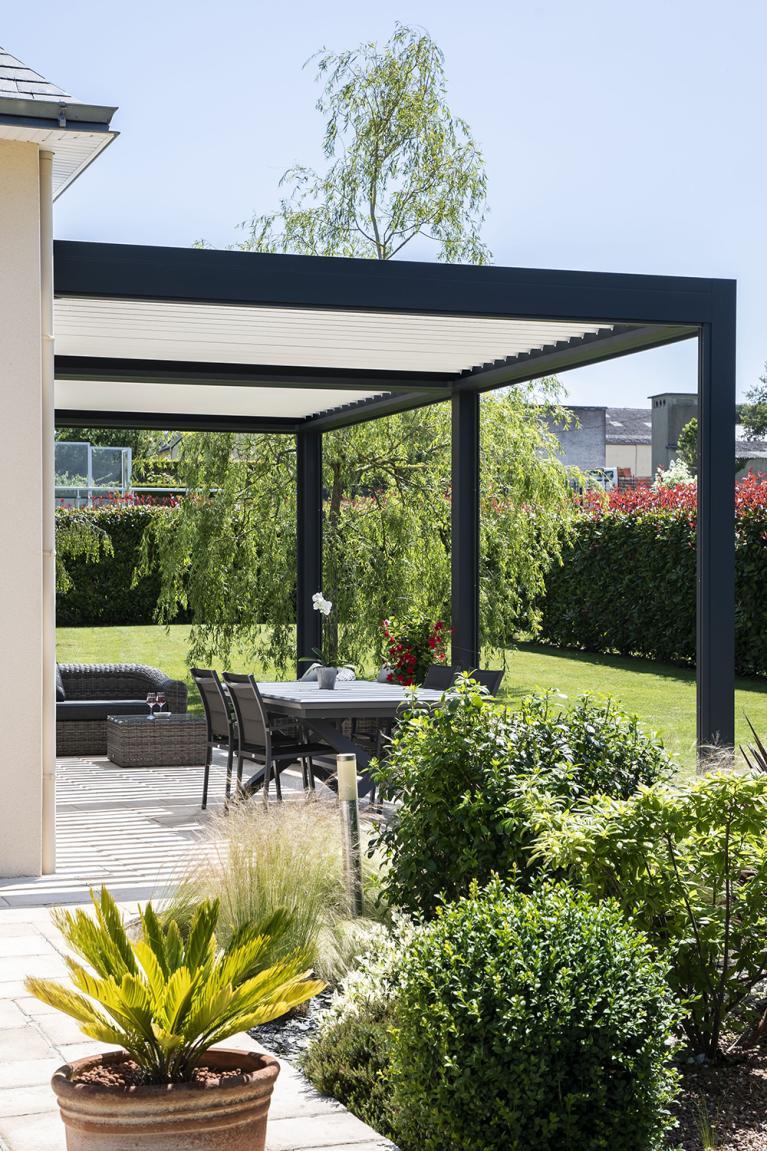
Useful customisation options for the terrace pergola
To ensure that your pergola blends in perfectly with the look of your terrace and your house, there are numerous options for customisation:
- a wide choice of colours for the structure
- integrated LED lighting option
- sliding glass panels
- perimeter blinds for optimal protection
- solar sensors to power the mechanism
Don't hesitate to ask an AKENA professional for advice on designing a pergola that is truly tailored to your needs and your style.
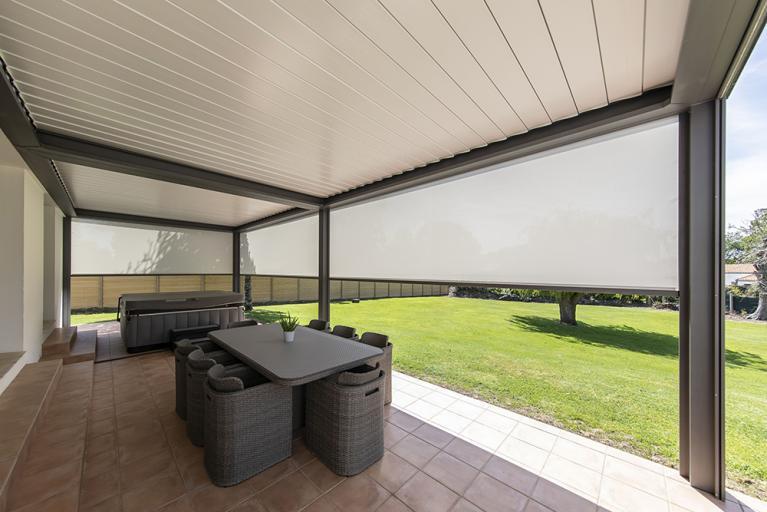
What are the ideal dimensions?
The garden pergola can have many dimensions depending on your needs. However, it is advisable to keep certain measurements in mind to take full advantage of it.
In terms of height, it is advisable to aim for a minimum of 2.20 metres, to allow free movement without feeling confined. Avoid exceeding 3 metres in height, to remain well covered in rainy weather.
In length, 1.20 m will be the minimum to really enjoy this space. You should be able to set up a small garden lounge and move around it without difficulty.
For the same reasons, it is recommended to opt for a width of at least 3 m. However, if your garden is small, make sure that your pergola does not take up more than a third of its surface area.
For added comfort, you can also choose to add side uprights to your pergola, on one or two sides. You will then be creating a real little living room in your garden. It is also an opportunity to create a winter garden, for example, or to protect your most fragile plants. Similarly, there are lighting systems that attach to the uprights of the pergola, so you can enjoy it after dark.
Don't hesitate to contact us for support with your project.
Effective protection for the terrace
Whether against UV rays, rain or wind, a pergola offers welcome protection that can be adjusted according to the weather conditions. With a bioclimatic pergola with adjustable slats, you can enjoy optimal comfort outdoors while making the most of each season.
- In summer, adjust the slats of your pergola to create a shaded area where you can relax, sheltered from the scorching rays of the sun. This will help you avoid heatstroke while minimising the impact of UV rays on your skin and outdoor furniture.
- When it starts raining, simply close the slats to provide an effective protective roof. No more inconvenience of having to put away the table and chairs at the slightest shower!
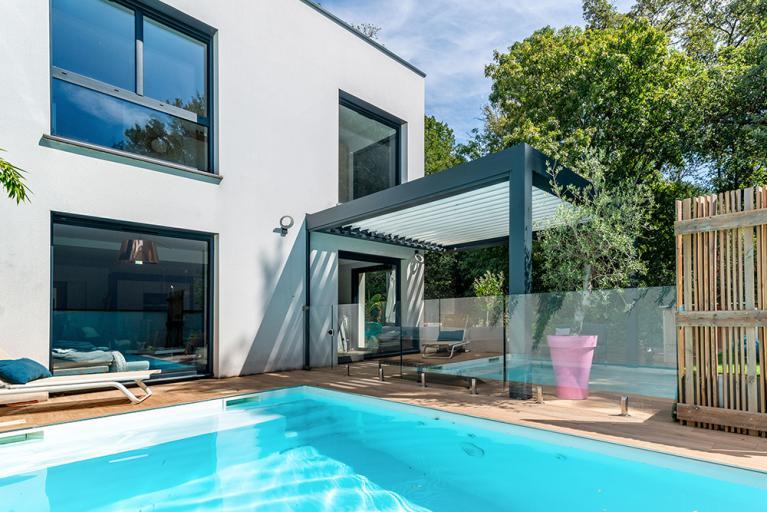
How can you integrate a pergola into the aesthetics of your terrace?
Our advice: opt for a pergola with clean lines if your space is small. Models with thin posts and beams will give an impression of openness and lightness. Conversely, a large terrace will go well with a pergola with more imposing structures to create an interesting perspective effect.
Also consider plant cover for successful integration. Climbing plants such as virgin vine, wisteria or honeysuckle will soften the appearance of the pergola. You can also provide planters to allow the plants to descend along the posts.
Finally, play around with accessories such as shade sails, blinds and lighting for a personalised touch. A string of fairy lights will create a warm atmosphere in the evening.
Our other uses
Discover all the pergolas on offer below, they are endless, as extensive as Akena's expertise.
The magazine of the Akena company
You have a project?
Would you like a personalised 3D study and a free quotation? Contact us by clicking below.
AKENA is...
Over 40 years of experience
Founded in 1981 by one man, we now have more than 500 employees dedicated to making your project a success.
Made in France
A historic site and two factories covering more than 25,000 m² in Dompierre-sur-Yon in the Vendée region (85)
Innovative and tailor-made products
At AKENA, we are brimming with new ideas to improve and enhance our products.
The European leader in conservatories, pergolas...
But not only! AKENA also offers a complete range of carports and pool houses.
